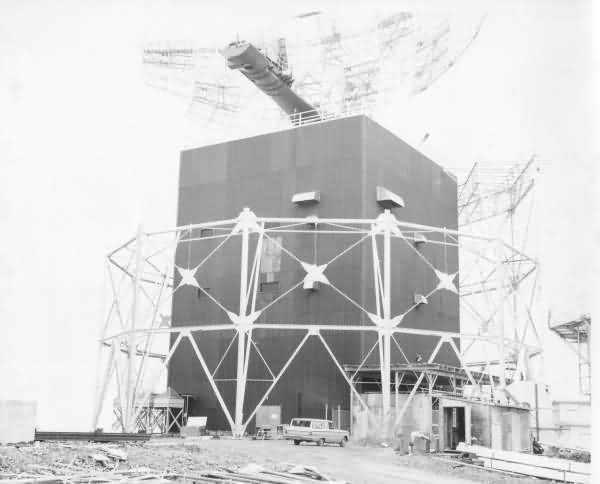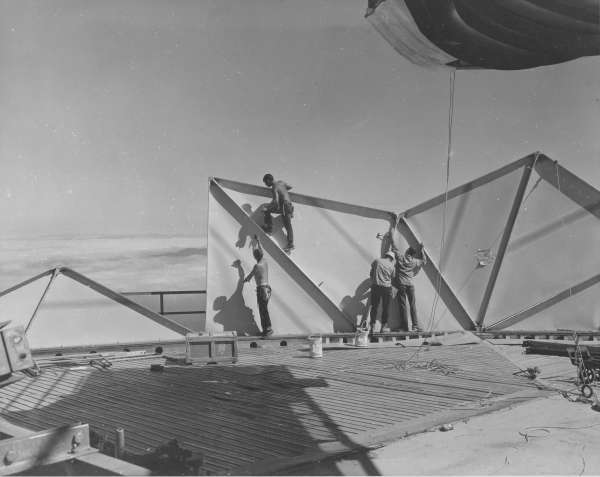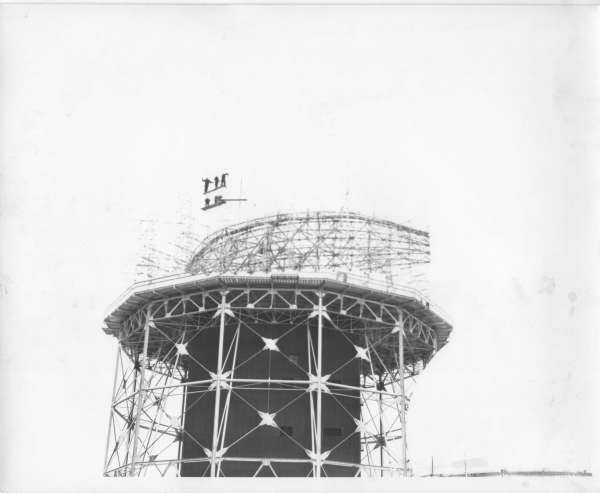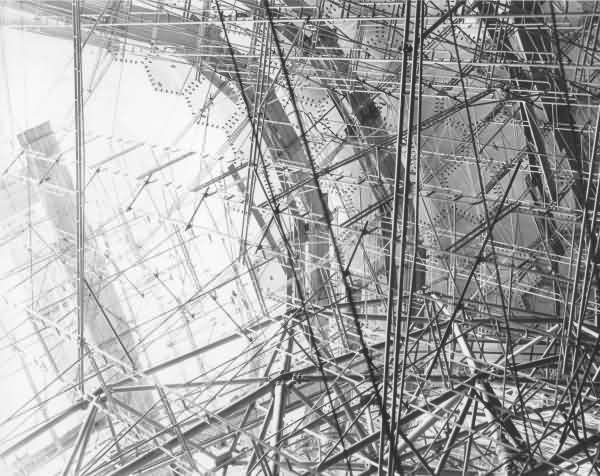Some dome construction photos
Photos contributed by Scott Gross
Scott was the base photographer at the Mt. Hebo, and included these photos along with a batch of excellent shots.
Notes contributed by Steve Weatherly

The steel radome support structure (RSS) is shown under construction. Only the FPS-24s at Mt Hebo and Cottonwood had an RSS and a radome. The RSS when completed included sheet metal floor decking that was level with the top of the black colored, 5 story tall (85 foot) FPS-24 building. The radome was actually installed on the RSS and not on the FPS-24 bldg. The grounding for the RSS was an on-going issue and the Civil Engineers checked the grounding straps at each RSS pad bi-weekly for corrosion and conductivity. Lightning strikes contributed to the reasons for the collapse of radome #2.

The start of construction for radome #3 (a space frame and the 3rd and final for the FPS-24) is shown. This CW-798 radome was made and installed by ESSCO. Many different panel shapes were used, but all had a thin fiberglass panel attached to the spaceframe. Once above the first level of panels, a "cherry picker crane" was used to raise panels into position. This crane remained inside the radome when it was completed. It was stowed in a collapsed position close to the radome deck.

Start of the construction for radome #1 or #2. Instead of a crane as for radome #3, scaffolding was used. Radomes #1 and #2 were of a sandwich panel construction with fiberglass over a cardboard honeycomb. The radome at Cottonwood used the same type of panels and was eventually removed and used for a school gym.

Interior of radomes #1 or #2 during construction. The scaffolding web was extensive and removed when the radome was completed.
In general the sandwich style radomes used at Mt Hebo (total of 2) and at Cottonwood (total of 1) were very heavy. The spaceframe radome at Mt Hebo was probably only a fourth the weight of the sandwich style. The RSS was needed to carry the radome weight since the FPS-24 building was not designed for the load of the sandwich style. In addition, the RSS was needed to provide a sufficiently large physical base on which to fasten the radome. The top of the FPS-24 building was not large enough by itself. All the radomes for the FPS-24 were over 160 feet in diameter and constitued 70 percent of a sphere with this diameter. Sufficient space was also provided on the RSS deck for a walkway around the outside of the radome - quite the view. The FPS-24 antenna was about 145 feet wide. These radomes were really big and could easily be seen many miles away; for Mt Hebo at least 50 miles at sea.
Special attention was given to providing access to the antenna once the RSS was completed. A large hatch and winch was included in the floor of the RSS deck so that large objects could be moved into and out of the radome. This included items like the antenna bearing, rotary coupler, antenna drive motors, and the panels of the radome.
There were unintended consequences of the RSS and large radomes for the FPS-24 at Mt Hebo. Ice buildup on the RSS and the radome constituted a real hazard for those in the buildings nearby the FPS-24. The erector set design of the RSS offered many areas for large ice buildup. This included the operations building and both height finder towers. Large chunks of ice frequently came off either the RSS or the radome. Personnel movement outside was restricted during icing conditions. There were no heat banks as for both height finder radomes. In addition, the panels of the FPS-24 radome were a hazzard when they collapsed. The FPS-24 antenna was damaged by panel debris and there was damage to both height finder radomes and antennas, and an earlier search radar antenna. The outer wing panels of the FPS-24 antenna at Mt Hebo were so badly damaged that they were replaced by those from Cottonwood when it closed.